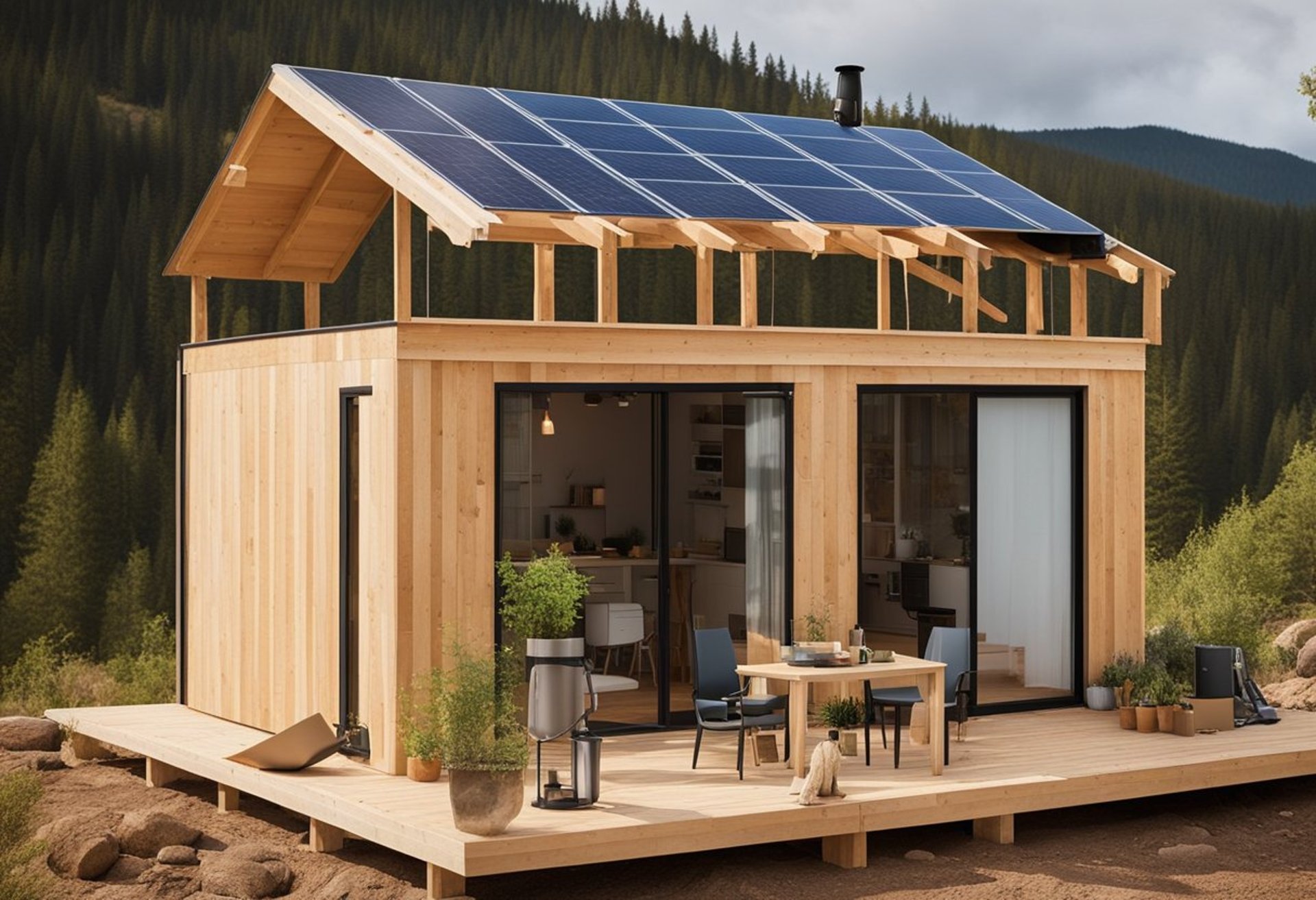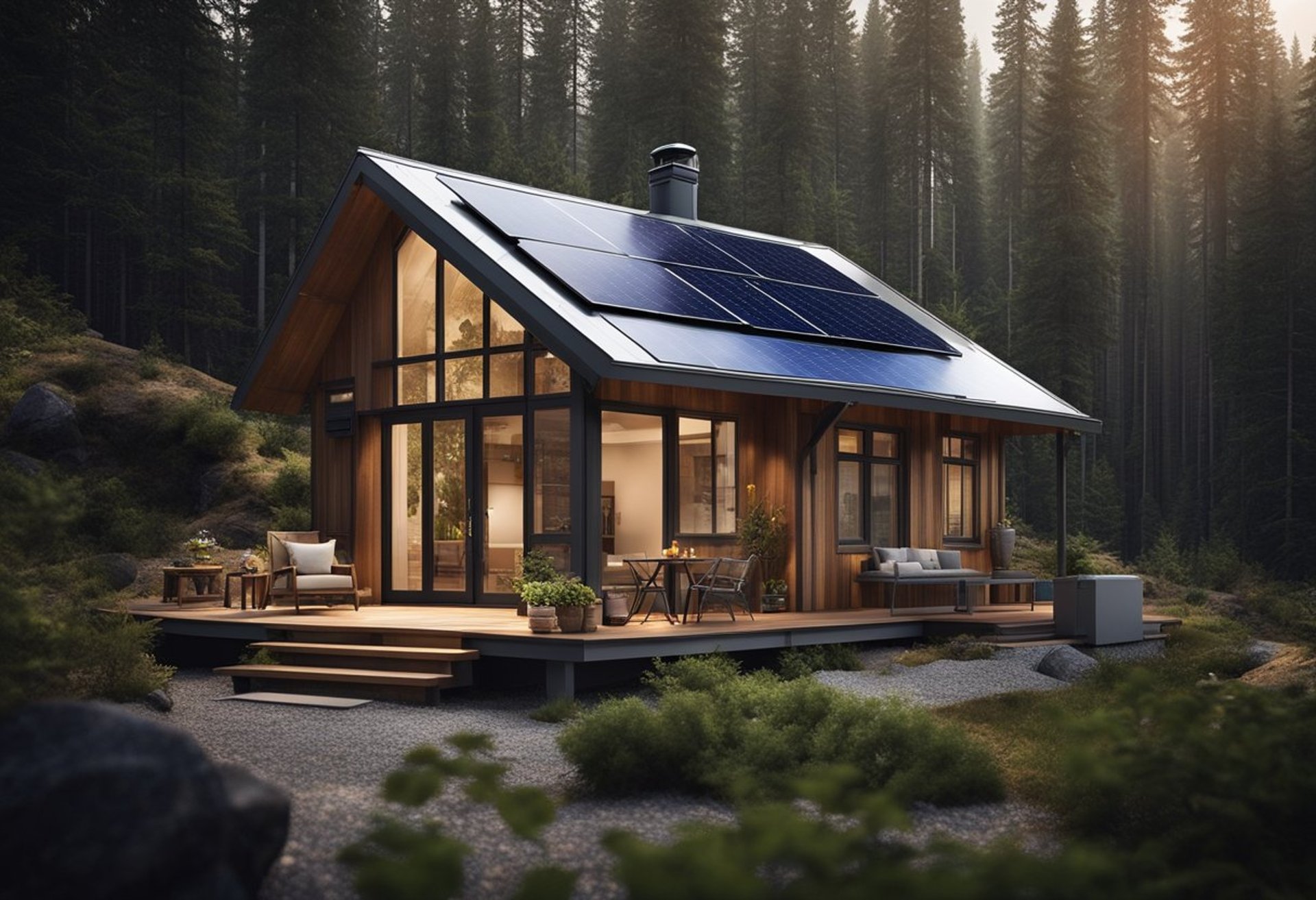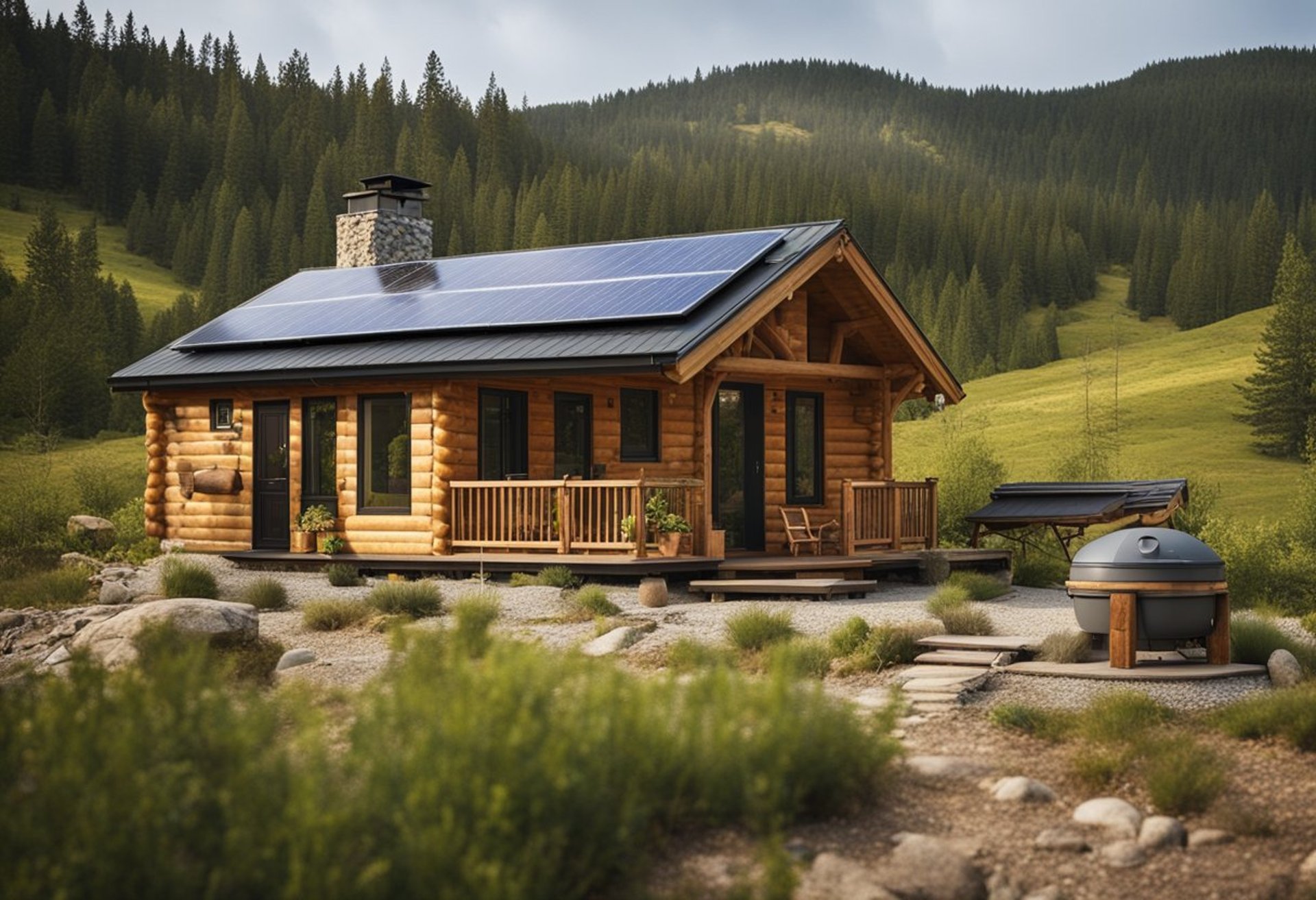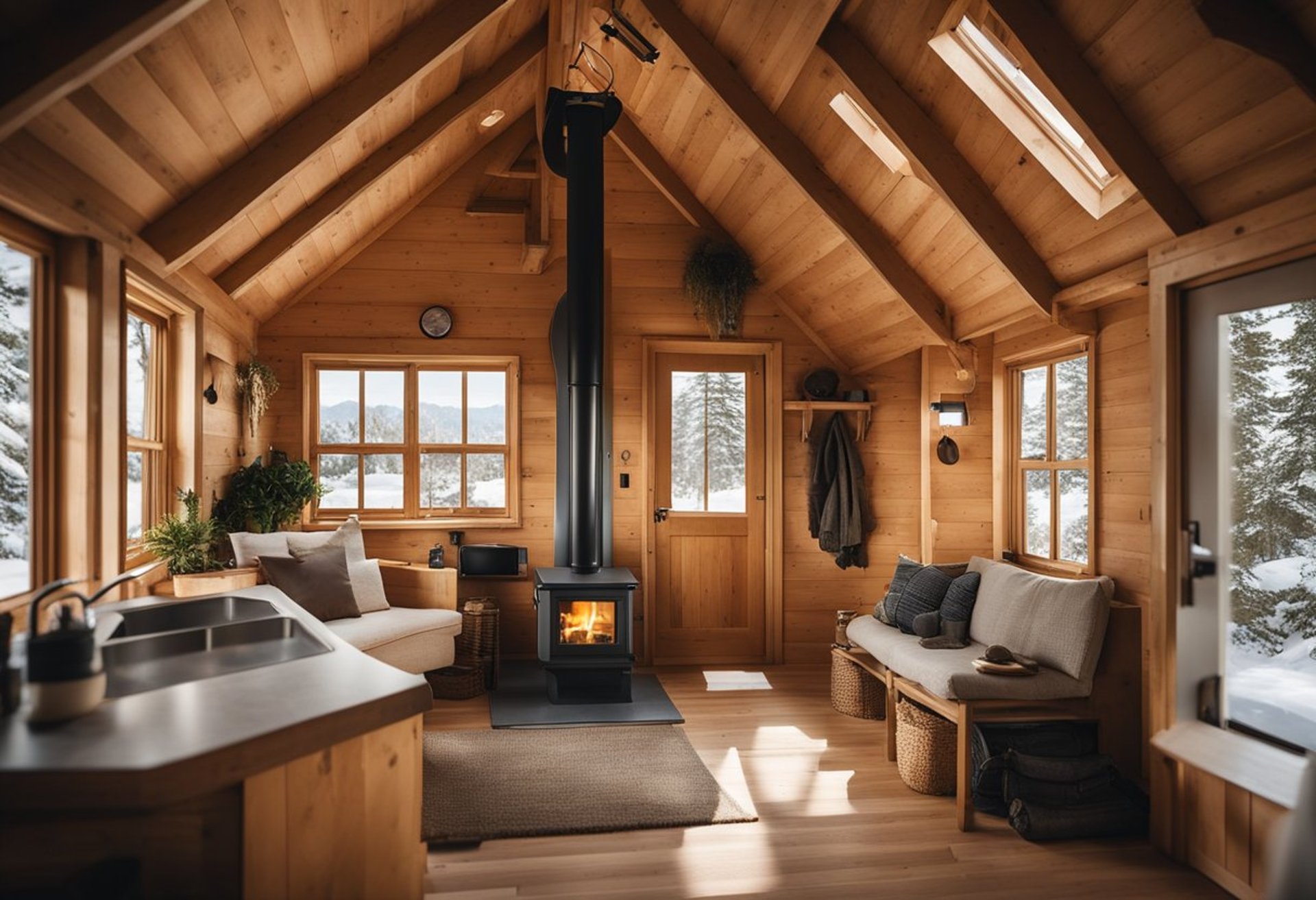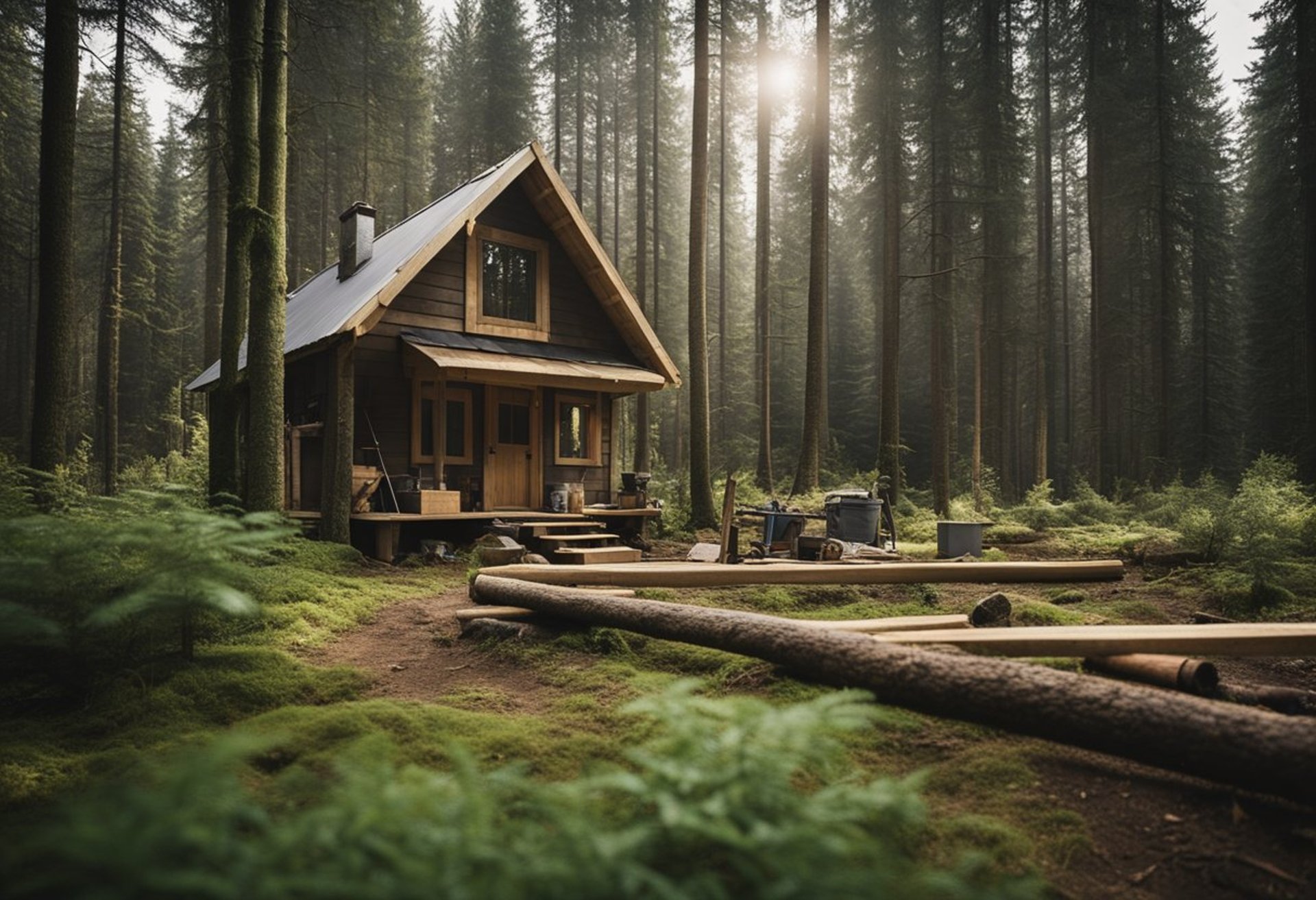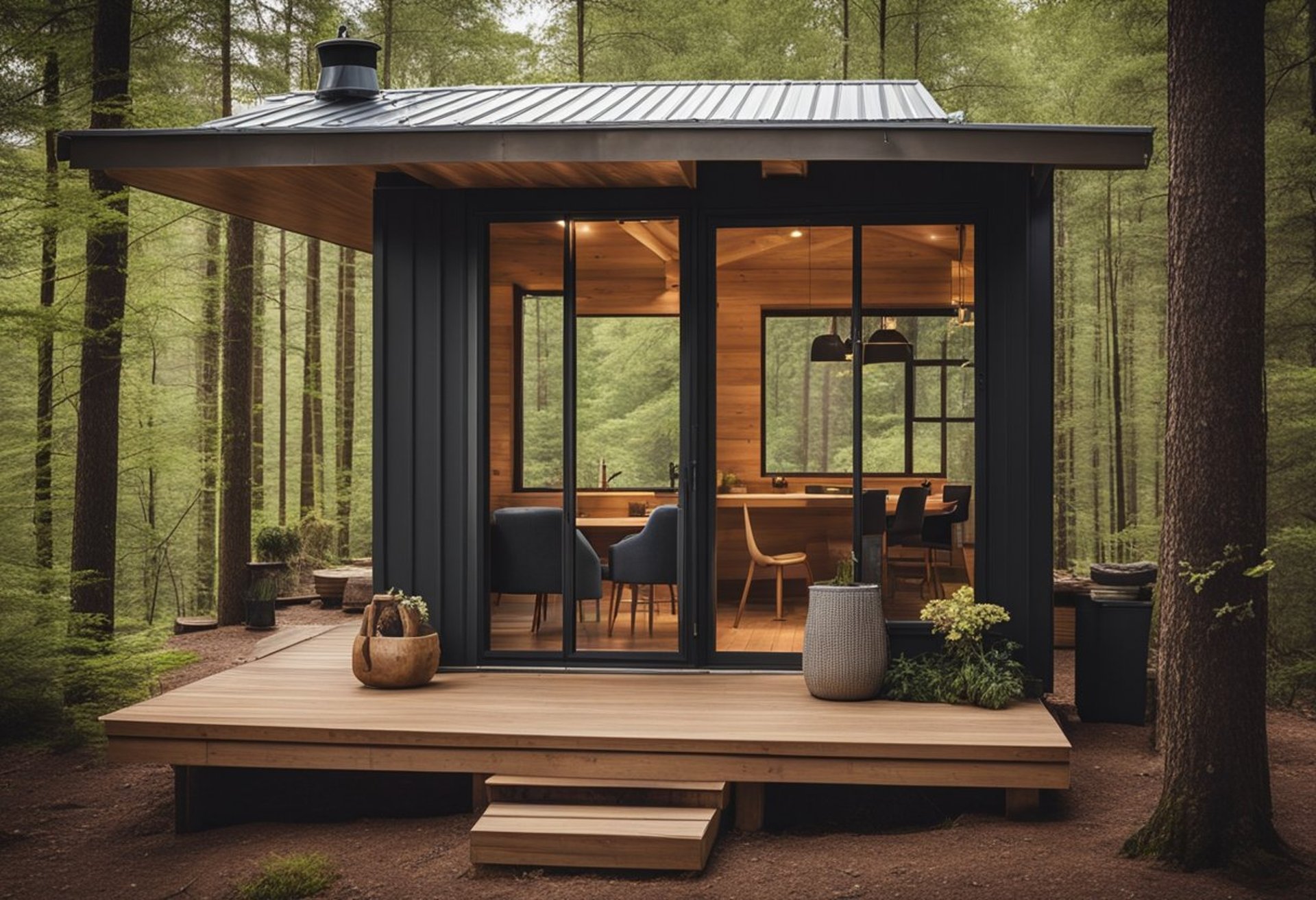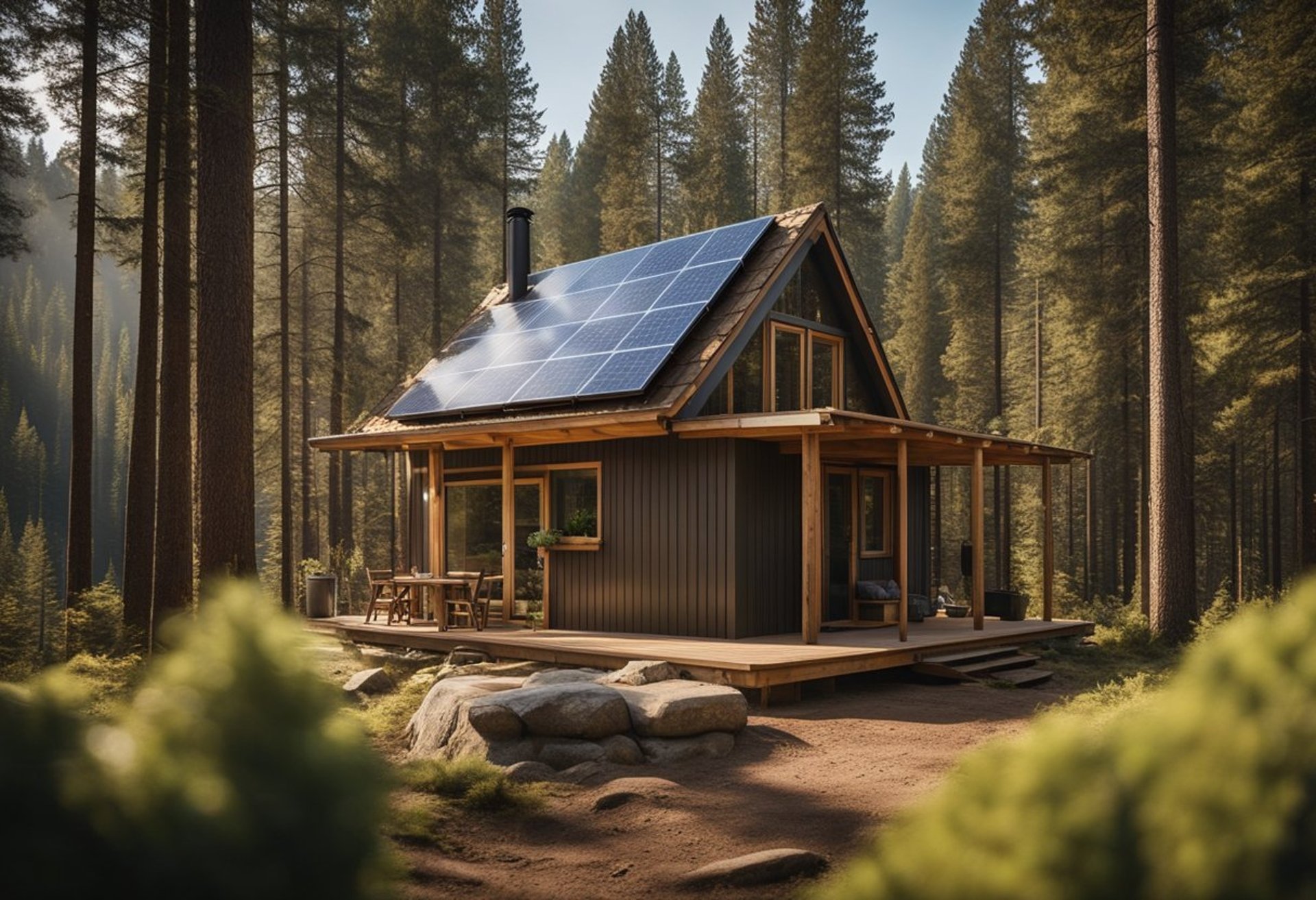2 Bedroom Off Grid Cabin: Your Guide to Sustainable Living
The allure of a two-bedroom off-grid cabin lies in its promise of independence and simplicity. For those seeking a self-sufficient lifestyle, this type of cabin offers a unique blend of comfort and sustainability, allowing individuals to disconnect from the grid while still enjoying modern amenities. Whether it's for a weekend retreat or a permanent home, understanding the essentials of off-grid living becomes crucial.
2 Bedroom Off Grid Cabin: Your Guide to Sustainable Living
The allure of a two-bedroom off-grid cabin lies in its promise of independence and simplicity. For those seeking a self-sufficient lifestyle, this type of cabin offers a unique blend of comfort and sustainability, allowing individuals to disconnect from the grid while still enjoying modern amenities. Whether it's for a weekend retreat or a permanent home, understanding the essentials of off-grid living becomes crucial.
Building a two-bedroom off-grid cabin involves thoughtful design and planning. From selecting the right location to implementing efficient energy solutions, each decision shapes the living experience. This guide explores various aspects of off-grid cabin living, providing insights that can inspire and inform prospective builders.
Living off the grid can seem daunting, but with the right approaches, it becomes manageable and fulfilling. By embracing innovative ideas for sustainability and comfort, anyone can create an inviting space that thrives outside conventional living norms.
Key Takeaways
Off-grid cabins offer independence and sustainable living options.
Effective planning is crucial for energy and resource management.
Knowledge of regulations and building practices ensures a smooth process.
Understanding Off-Grid Living
Off-grid living involves self-sufficiency, where individuals rely on their own resources rather than public utilities. This lifestyle offers unique benefits and challenges that require careful consideration and planning.
Defining Off-Grid Living
Off-grid living refers to a lifestyle where individuals or families operate independently of conventional utility services such as electricity, water, and sewage. People often choose to live off-grid to reduce their environmental impact, increase self-reliance, or escape urban life.
Key components include:
Energy Sources: Use of solar panels, wind turbines, or generators.
Water Management: Collection of rainwater or sourcing from nearby springs.
Waste Management: Installation of composting toilets or septic systems.
This approach demands a comprehensive understanding of resource management and sustainability practices.
Advantages and Challenges
Off-grid living offers distinct advantages along with notable challenges.
Advantages
Independence: Freedom from utility bills and reliance on public services.
Ecological Benefits: Reduced carbon footprint through renewable energy.
Connection to Nature: Enhanced appreciation for natural resources and landscapes.
Challenges
Initial Costs: High upfront costs for equipment like solar panels or water systems.
Maintenance: Ongoing effort required to maintain systems and resources.
Isolation: Potential for loneliness or difficulty accessing emergency services.
Individuals must weigh these factors to assess if off-grid living aligns with their lifestyle goals.
Design Principles of 2 Bedroom Off-Grid Cabins
Effective design for a two-bedroom off-grid cabin prioritizes space efficiency, sustainability, and structural integrity. Each aspect plays a vital role in creating a functional and eco-friendly living space.
Maximizing Space Efficiency
In a two-bedroom off-grid cabin, efficient use of space is essential. Open floor plans can create a sense of spaciousness while allowing natural light to flow throughout the cabin.
Multi-functional furniture, such as convertible sofas or Murphy beds, can reduce clutter and enhance functionality. Custom-built storage solutions maximize vertical space, utilizing walls for shelving or built-in cabinets.
Layout considerations include the strategic placement of windows for ventilation and light, which can make smaller spaces feel larger. Thoughtful organizing systems can streamline daily activities, ensuring that every square foot serves a purpose.
Integrating Sustainable Features
Sustainable features are crucial in off-grid cabin design. Incorporating solar panels provides renewable energy, while energy-efficient appliances minimize electricity consumption.
Water conservation systems, such as rainwater harvesting or graywater recycling, reduce reliance on external water sources. Natural insulation materials, such as straw bales or recycled denim, enhance energy efficiency and comfort.
Passive solar design maximizes heat from sunlight, utilizing design elements like overhangs to control temperature year-round. Proper orientation of windows and thermal mass can further optimize energy use, creating a self-sustaining living environment.
Ensuring Structural Integrity
Structural integrity is fundamental in any off-grid cabin. Utilizing durable materials, such as timber frames or steel, can withstand various environmental conditions.
Design considerations should include load-bearing walls and proper anchoring methods to ensure stability during adverse weather.
Building codes and local regulations must be adhered to, which can affect design choices. Regular maintenance of the structure will prolong its lifespan and ensure safety, making it vital for long-term off-grid living. Addressing these principles contributes to a resilient and livable cabin experience.
Site Selection and Preparation
Choosing the right site for a two-bedroom off-grid cabin involves assessing various factors. Location, climate, land characteristics, and legal requirements play vital roles in this decision. Thorough evaluation ensures a sustainable and functional living environment.
Evaluating Location Climate
Climate significantly impacts off-grid living. Understanding local temperature ranges, precipitation patterns, and seasonal changes is essential.
Factors to consider include:
Temperature extremes: Determine how harsh winters or hot summers might affect comfort and energy needs.
Rainfall: Assess average rainfall to plan for water collection systems.
Natural disasters: Research risks such as floods, wildfires, or hurricanes in the area.
Selecting a climate that suits personal preferences can enhance the living experience in an off-grid setting.
Assessing Land Topography
Topography influences construction, drainage, and accessibility. A site with diverse elevations can provide natural windbreaks and sun exposure.
Important considerations include:
Slope: A moderate slope aids drainage and prevents flooding.
Soil quality: Test the soil to ensure adequate support for foundation and gardens.
Proximity to resources: Locate the site near water sources, timber, and wildlife for a self-sufficient lifestyle.
Considering these factors helps ensure the cabin can be built sustainably and effectively.
Understanding Zoning Laws
Zoning laws dictate what can be built on a particular piece of land. It is crucial to research these laws early in the site selection process.
Key points to examine include:
Permitting: Confirm if permits are required for construction, septic systems, or other installations.
Land use regulations: Understand restrictions related to off-grid living, such as utility connections or minimum dwelling sizes.
Future changes: Investigate any upcoming zoning changes that could impact land use or property value.
Complying with zoning laws is essential for successful cabin construction and long-term habitation.
Energy Solutions for Off-Grid Cabins
Energy independence is essential for off-grid living. Effective energy solutions include solar power systems, wind energy options, and hybrid systems for backup power, catering to various needs and preferences.
Solar Power Systems
Solar power systems are a popular choice for off-grid cabins. They consist primarily of solar panels, an inverter, and a battery storage system.
Key components:
Solar Panels: Convert sunlight into electricity.
Inverter: Transforms DC electricity to AC for household use.
Batteries: Store excess energy for use during cloudy days or nighttime.
System size varies based on energy requirements. A small cabin may need 2-4 solar panels, while larger homes could require more. It’s crucial to assess energy consumption to determine the optimal setup.
Wind Energy Options
Wind energy is another viable solution for off-grid cabins, particularly in areas with consistent wind. A wind turbine captures wind energy and converts it to electricity.
Components include:
Wind Turbines: Vary in size and output. Small turbines can produce sufficient power for basic needs.
Charge Controller: Regulates battery charging to prevent overcharging.
Batteries: Store energy generated for later use.
When considering wind energy, local wind resources should be evaluated. Wind power complements solar energy, providing a reliable energy source during overcast conditions.
Hybrid and Backup Power
Combining solar and wind energy creates a hybrid system that maximizes efficiency. Hybrid systems can enhance reliability and ensure energy availability in varying conditions.
Benefits include:
Increased Resilience: Provides power continuity.
Battery Backup: Stores energy from both sources for use when needed.
For those requiring additional reliability, generators can serve as a backup option. Portable generators offer flexibility, while stationary generators provide steady power.
Choosing the right energy solutions depends on specific needs, location, and budget. Balancing these factors allows for a tailored approach to off-grid energy needs.
Water Collection and Waste Management
Effective water management and waste solutions are essential for any off-grid cabin. This section focuses on two main systems: rainwater harvesting and greywater or sewage management. Each method provides practical solutions for sustainable living.
Rainwater Harvesting Systems
Rainwater harvesting is a key method for collecting water in off-grid settings. Systems typically include gutters, downspouts, and storage tanks.
Gutters: Installed along the roof edges, they channel rainwater into downspouts.
Downspouts: These direct water from gutters to storage tanks, preventing overflow.
Storage Tanks: Tanks can be above or below ground and should be made of food-grade materials to ensure water quality.
Rainwater can be filtered using sediment filters to remove debris, ensuring clean water for various uses. Using rainwater for irrigation, cleaning, and even drinking (after proper filtration) maximizes self-sufficiency.
Greywater and Sewage Solutions
Greywater systems manage water from sinks, showers, and washing machines, providing a valuable resource.
Collection: Greywater can be collected using a dedicated drain system.
Filtration: Pre-filtration is necessary to remove large particles, allowing for safer disposal or reuse.
Recycling: Greywater can be reused for irrigation, thus conserving freshwater supplies.
For sewage, a composting toilet system is often preferred. It reduces waste volume and produces compost that can enrich the soil. These systems require careful management to maintain hygiene and minimize odors.
Implementing efficient water collection and waste management strategies enhances sustainability and self-reliance in an off-grid cabin.
Heating, Cooling, and Insulation Techniques
Effective heating, cooling, and insulation are crucial for the comfort of a two-bedroom off-grid cabin. Utilizing specific materials and design strategies enhances energy efficiency and creates a sustainable living environment.
Thermal Mass Materials
Thermal mass materials are essential for temperature regulation in an off-grid cabin. These materials, such as concrete, brick, or stone, absorb heat during the day and release it at night. This creates a stable indoor temperature without relying heavily on artificial heating or cooling.
Advantages: The benefits include reduced energy consumption and a more comfortable living space.
Common Choices: Materials often used for thermal mass include rammed earth walls or thick stone floors.
Selecting the right thermal mass can significantly impact energy efficiency and indoor comfort.
Passive Solar Design
Passive solar design incorporates architectural elements that optimize sunlight for heating and cooling. This method focuses on window placement, building orientation, and overhangs. Properly designed, it can significantly reduce reliance on external heating sources.
Window placement: South-facing windows capture maximum sunlight.
Overhangs: Properly sized overhangs block high summer sun but allow winter sun to warm the interior.
Integrating passive solar design reduces energy dependency and enhances comfort throughout the year.
Insulation and Ventilation
Insulation is vital for minimizing energy loss in an off-grid cabin. High-quality insulation materials include cellulose, spray foam, and fiberglass. Properly insulated walls, roofs, and floors keep indoor temperatures consistent.
Ventilation: Incorporating natural ventilation methods helps maintain air quality.
Types of Insulation: Each type has its pros and cons related to R-value and installation ease.
Balancing insulation with effective ventilation ensures a comfortable, energy-efficient living space.
Interior Design and Amenities
Creating a functional yet comfortable interior is essential for a 2 bedroom off-grid cabin. Consideration for furniture choices and appliance selection can greatly enhance the living experience while maintaining efficiency.
Functional Furniture Choices
Selecting furniture that maximizes space and usability is crucial. Multi-functional pieces can serve different purposes, such as a sofa bed that accommodates guests or a dining table that doubles as a workspace.
Wooden furniture provides durability and aesthetic appeal, while natural materials maintain a rustic charm. Consider using foldable chairs and nesting tables to optimize space.
Incorporating built-in storage solutions helps reduce clutter and maintain organization. This can include shelves, under-bed storage, or wall-mounted units. It ensures that every inch of the cabin is utilized effectively.
Appliance Selection for Efficiency
Choosing the right appliances is vital for an off-grid lifestyle. Energy-efficient models minimize power consumption and can often run on alternative energy sources, such as solar or wind.
Prioritize essentials like a propane stove, which offers cooking capabilities without significant electricity use. A compact refrigerator with low energy draw can maintain food storage effectively.
Water-related appliances, like eco-friendly washing machines or efficient water heaters, are also important. They cater to daily needs while keeping energy and resource use to a minimum.
Opt for appliances with a high Energy Star rating to ensure efficiency. This promotes a sustainable living environment while reducing the cabin's ecological footprint.
Cost Considerations and Budgeting
Budgeting for a two-bedroom off-grid cabin involves careful planning of both initial and ongoing costs. Understanding materials, labor, and maintenance is crucial for effective financial management.
Materials and Labor Estimates
When building an off-grid cabin, the cost of materials can vary significantly based on design and location. Key items include:
Lumber: Prices range from $2 to $5 per board foot, depending on type and availability.
Insulation: Effective insulation costs around $0.50 to $1.50 per square foot.
Roofing Materials: Metal roofing can cost $3 to $7 per square foot, offering longevity.
Labor costs typically account for 30% to 50% of the total budget. Hiring local builders may range from $15 to $30 per hour, while self-building reduces costs but requires more time and effort.
Ongoing Expenses and Maintenance
Off-grid living entails certain ongoing expenses that must be factored into the budget. These include:
Energy Sources: Solar systems can range from $10,000 to $30,000 initially; however, maintenance costs are relatively low.
Water Systems: A rainwater collection system may incur installation costs of $1,500 to $3,000, plus minor maintenance costs.
General Maintenance: Allocate around 1% to 2% of the cabin's total value annually for upkeep.
Additionally, consider costs for sewage systems, property taxes, and insurance. Understanding these recurring financial responsibilities helps maintain a stable budget for off-grid living.
Building Process and Best Practices
The building process for a two-bedroom off-grid cabin involves careful planning and execution. Key elements include breaking down the construction phases and implementing quality control measures.
Step-by-Step Construction Phases
Site Preparation: Begin by clearing the land where the cabin will be built. This involves removing trees, rocks, and debris. Proper drainage should be established to prevent water accumulation.
Foundation: Choose a foundation type suitable for the terrain, such as a concrete slab, pier, or skid foundation. Ensure that it is level and secure, using materials that can withstand shifts in the ground.
Framing: Use durable materials like treated lumber or steel for the frame. Erect walls, ensuring they are squared and plumb. This phase is crucial for structural integrity.
Roofing: Install a roof that matches the cabin's design. Options include metal, shingles, or thatch, depending on aesthetic and functional needs. Ensure proper insulation and waterproofing.
Utilities Installation: Incorporate off-grid systems such as solar panels, composting toilets, and rainwater catchment. Properly configure plumbing and electrical systems to maximize efficiency.
Quality Control and Safety Measures
Prioritizing safety and quality control is essential throughout the construction process. Implementing the following measures helps ensure a successful build:
Regular Inspections: Schedule periodic inspections of each construction phase to check for adherence to building codes and standards.
Material Quality: Select high-quality materials that are suitable for off-grid living. This includes weather-resistant wood, energy-efficient windows, and reliable insulation.
Safety Equipment: Use personal protective equipment (PPE) such as helmets, gloves, and safety glasses while on-site. Ensure that the construction area is free from hazards.
Training: Ensure that all workers are trained in safety protocols, including first aid and emergency response. This prepares them for potential hazards.
By focusing on these steps and practices, the construction of a two-bedroom off-grid cabin can be a rewarding and safe experience.
Regulations and Legal Compliance
When constructing a 2-bedroom off-grid cabin, understanding the relevant regulations is crucial. Compliance with building codes, permits, and land use policies ensures legal operation and minimizes future issues.
Building Codes and Permits
Building codes establish the minimum standards for construction. These codes vary by location and often dictate materials, structural integrity, and safety requirements.
Obtaining a permit is typically necessary before construction begins. This process may include submitting plans and undergoing inspections. The goal is to ensure that the cabin meets safety standards and does not pose a risk to inhabitants or the environment.
Non-compliance can lead to fines, mandatory modifications, or even demolition of the structure. It's essential to consult local authorities regarding specific requirements, as these can differ widely based on the area.
Land Use Policies and Restrictions
Land use policies govern how land can be utilized in a particular area. These regulations may restrict the type of structures allowed, density, and usage of natural resources.
Property zoning laws can significantly impact the feasibility of building an off-grid cabin. Properties may be zoned for residential, agricultural, or recreational use, influencing what can be built.
Additionally, covenants or neighborhood associations may impose restrictions not found in local laws. Researching the land's designation is crucial to avoid conflicts and ensure compliance with all applicable rules. Understanding these policies aids in making informed decisions about building an off-grid cabin.
Sustainable Living Educational Resources
Access to reliable educational resources is essential for anyone interested in sustainable living. This includes a wide array of books, guides, and online learning opportunities that equip individuals with the knowledge and skills needed to thrive off the grid.
Books and Guides
A variety of books and guides focus on sustainable living practices. Key titles often include practical information on topics such as permaculture, renewable energy, and natural building techniques.
Notable recommendations include:
"The Renewable Energy Handbook" by William H. Kemp: A comprehensive guide covering various energy options.
"Gaia’s Garden" by Toby Hemenway: Offers insights into designing a sustainable garden.
These resources provide step-by-step instructions and illustrations to help readers implement sustainable practices effectively. Additionally, they often include case studies that inspire and inform based on real-world applications.
Online Courses and Workshops
Online courses and workshops provide valuable insights into sustainable living. Platforms like Coursera, Udemy, and local universities frequently offer classes focused on self-sufficiency, gardening, and renewable energy systems.
Students can benefit from:
"Introduction to Sustainability": An overview of sustainability concepts and practices.
Hands-on workshops offered by organizations like the Permaculture Institute.
These courses typically combine theoretical knowledge with practical applications, allowing learners to engage interactively. Participants often leave with actionable skills tailored to their off-grid living goals.
Conclusion
Choosing a two-bedroom off-grid cabin presents numerous advantages for those seeking independence from conventional living. It offers a unique blend of simplicity and sustainability.
Key benefits include:
Self-Sufficiency: Reduced reliance on public utilities.
Environmental Impact: Lower carbon footprint through sustainable practices.
Cost Savings: Potential for reduced living expenses over time.
When considering an off-grid lifestyle, factors such as location, resources, and building materials are crucial. A well-planned cabin can provide comfort and functionality.
Factors to explore include:
Energy Sources: Solar panels or wind turbines for power.
Water Supply: Rainwater harvesting and filtration systems.
Waste Management: Composting toilets and recycling processes.
Ultimately, a two-bedroom off-grid cabin can serve as a retreat or permanent residence, adapting to various lifestyles. It embodies a commitment to self-sufficiency and respect for nature, appealing to many.


